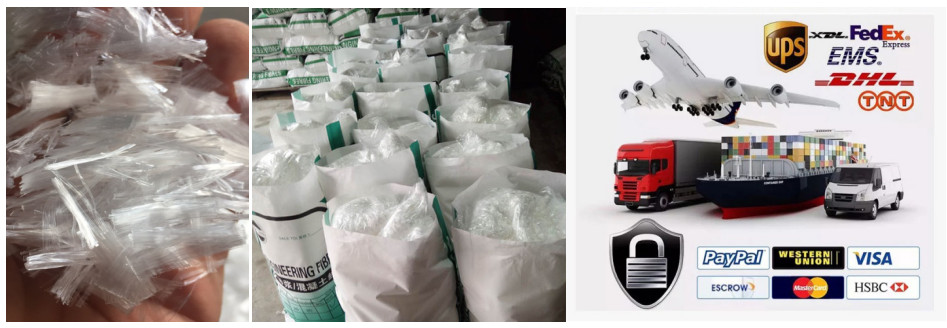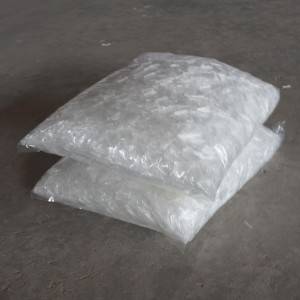Polypropylene Fiber
Polypropylene fiber for concrete is a polypropylene as the main raw material,adopting unique manufacturing process to make high strength bundle monofilament fiber.Join concrete(or mortar)can effectively control concrete(or mortar)micro-cracks which is caused by plastic shrinkage,temperature changes and other factors,to prevent and inhibit the formation and development of cracks,greatly improved crack resistance of concrete,impact resistance and seismic capacity.
| Raw Material | Polypropylene | Crack Elongation | ≥15% |
| Fiber Type | Monofilament | Elasticity Modulus | ≥3000Mpa |
| Melting Point(C Deg.) | 160-170 | Fiber Diameter | 25-45um |
| Acid & Alkali Resistance | Strong | Tensile Strength | 350 min |
| Water Absorbency | NO | Density | 0.91-0.93g/cm3 |
Function:
1. Easy to be dispersed in mortar or concrete and no agglomeration, it can guarantee the property of crack resistance effectively
2. Easy to be used: No need to change the proportion of mortar, just put the fibers into the mortar mixture and stir for a moment after adding water.
3. It with fine economic property: The equivalent diameter of PP monofilament is only φ 0.03mm, so the ratio of diameter and surface area is high and on the basis of crack resistance, it can reduce the amount (to about 0.6kg/m 3 ).
4. Easy to plaster: As the great number of thin fibers spread into mortar evenly, the plastering is much easily and this can improve the binding strength between surface and base.
5. It with stable chemical property, strong acid &alkali resistance, and can be used in any engineering projects.
Applying Instruction :
Length: for motor, <12mm; for concrete: >12mm
Compounding amount: for resisting the common cracks on surface,0.9kg/m3 fibers to cement mortar are enough.
Stirring requirement: the proportion of cement, sand and aggregate is no need to be changed. Put cement, aggregate, additive and fiber together, then stir after adding enough water and time for stirring can be prolonged for 2-3 minutes in order to make the compound mix completely. Also it can be mixed even with cement and other aggregates in advance, stirring by adding water at worksite before constructing.
Packaging/Transportation
The products are encapsulated in polypropylene woven bags with polythene inner bags coated with plastic, with a net weight of 20kg per bag.Pay attention to rain and sun protection during transportation.










